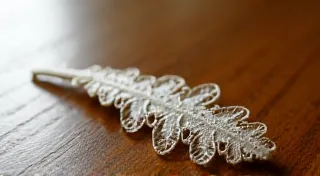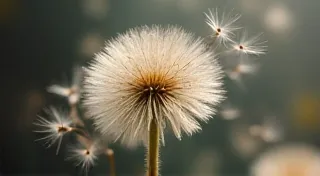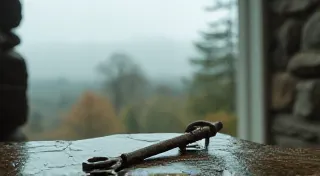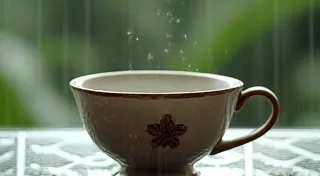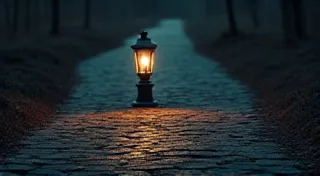Spectral Portraits: Hair Art and the Victorian Quest for Immortality
The Victorians were obsessed with death. It’s a statement that rings through their literature, their architecture, and most surprisingly, their art. While we might recoil from open displays of mourning today, the Victorian era embraced it. The rapid advancements in technology – particularly the invention of photography and the burgeoning craft of hair art – offered new ways to grapple with mortality, to preserve loved ones, and to strive, however fleetingly, for a form of immortality. This isn't simply about sentimentality; it’s a window into a society confronting the fragility of life in a profoundly moving way.
I remember the first time I encountered a piece of Victorian hair art. It wasn’t in a museum, but at an antique market. Tucked away in a dusty corner, beneath a pile of chipped china, lay a small, framed portrait. At first glance, I mistook it for a faded photograph. But upon closer inspection, I realized the "hair" wasn’t hair at all—it *was* the artwork. Delicate strands, meticulously arranged to form a woman’s likeness, stared back at me with an uncanny stillness. The feeling was strangely unsettling, profoundly sad, and utterly captivating. It was a tangible reminder of lives lived and lost, and the lengths to which people would go to remember them.
The Age of Mourning and the Rise of Remembrance
The mid-19th century saw a surge in mortality rates. Diseases like cholera and typhoid were rampant, infant mortality was tragically high, and medical advancements lagged far behind the societal anxieties surrounding death. Photography, invented just decades prior, offered a precious visual record of loved ones who were gone. However, even a photographic image was vulnerable to time and damage. Hair art emerged as a complementary, and often intertwined, form of memorial. It provided a tangible, three-dimensional keepsake – something that could be touched, held, and passed down through generations.
The social conventions of the Victorian era also dictated elaborate mourning rituals. Black clothing, restricted social activities, and specific etiquette rules marked periods of grief. Hair, being a part of the individual, became a particularly powerful symbol. It was common to keep locks of hair from deceased children and spouses, and these were often incorporated into jewelry, wreaths, and, of course, framed portraits. The practice wasn’t macabre; it was a way to keep the memory alive, a constant, gentle reminder of the departed. The intricate detail and artistry put into these keepsakes underscore a deeper exploration of mourning practices - a topic further examined in Beyond Mourning: Hair Art as Decoration and Statement.
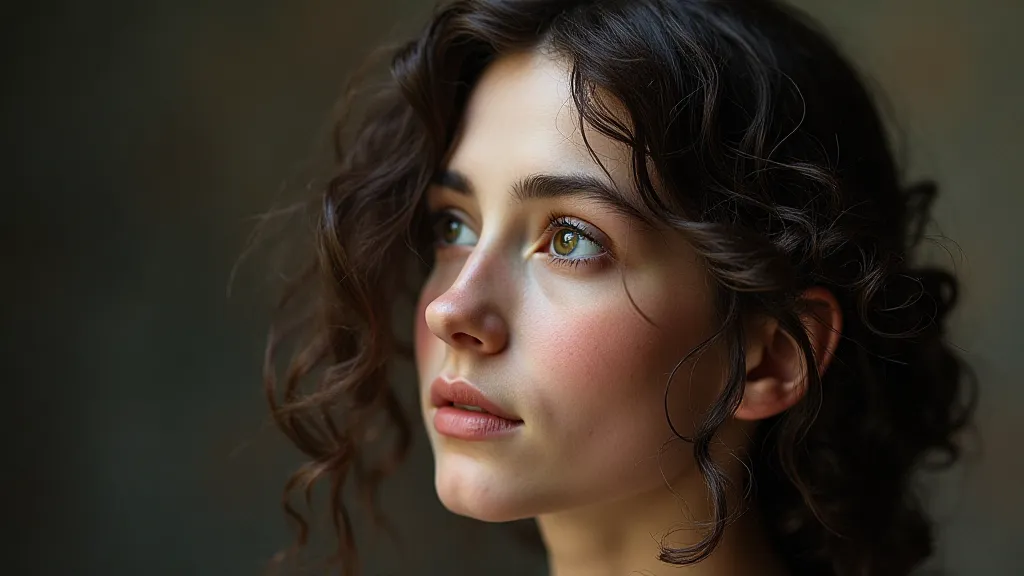
Techniques and Craftsmanship: A Labor of Love
Creating Victorian hair art was a meticulous and time-consuming process, requiring considerable skill and patience. While anyone could certainly arrange strands of hair into a simple design, the truly remarkable pieces—the portraits, the intricate wreaths, the miniature sculptures—were the work of highly skilled artisans, often women. These women were frequently self-taught, passing down techniques through family members or through informal apprenticeships.
The hair itself wasn’t just haphazardly glued down. It was painstakingly woven, braided, rolled, and looped to create shading, texture, and detail. Different colors of hair were often used to represent different features – darker strands for shadows, lighter strands for highlights. Artists utilized a variety of bases, including paper, fabric, and wood. They used glues, often made from natural ingredients, to secure the hair. Sometimes, they incorporated other materials, such as seed beads, silk threads, and even painted elements to add further detail and richness.
The quality of the materials used also varied widely. Some pieces were created with the finest quality human hair, while others might incorporate animal hair or even plant fibers. Distinguishing between these can be challenging for collectors, but it’s a key indicator of the artwork’s value and historical significance. Restoration, when necessary, requires a delicate touch and a deep understanding of the original materials and techniques. The societal investment in these intricate creations went beyond mere aesthetics; it intertwined with the economic considerations and the nuanced expressions of sentiment prevalent during the era—a topic explored in greater depth in Beyond the Keepsake: Hair Art and the Victorian Economy of Sentiment.
Beyond Portraits: Wreaths, Jewelry, and Miniature Masterpieces
While portraits were perhaps the most iconic form of Victorian hair art, the craft extended far beyond simple likenesses. Mourning wreaths, often created for funerals and memorials, were elaborate constructions of braided and woven hair, adorned with ribbons, flowers (real or artificial), and occasionally, small photographs or plaques. These wreaths symbolized everlasting love and remembrance.
Victorian hair jewelry was another popular outlet for this art form. Lockets, brooches, bracelets, and rings were often intricately crafted using strands of hair, sometimes incorporating small portraits or inscriptions. These pieces served as personal, intimate memorials, often worn close to the heart as a constant reminder of the deceased. Miniature sculptures, depicting scenes from literature or mythology, were also created, showcasing the astonishing dexterity and artistry of Victorian hair artists.
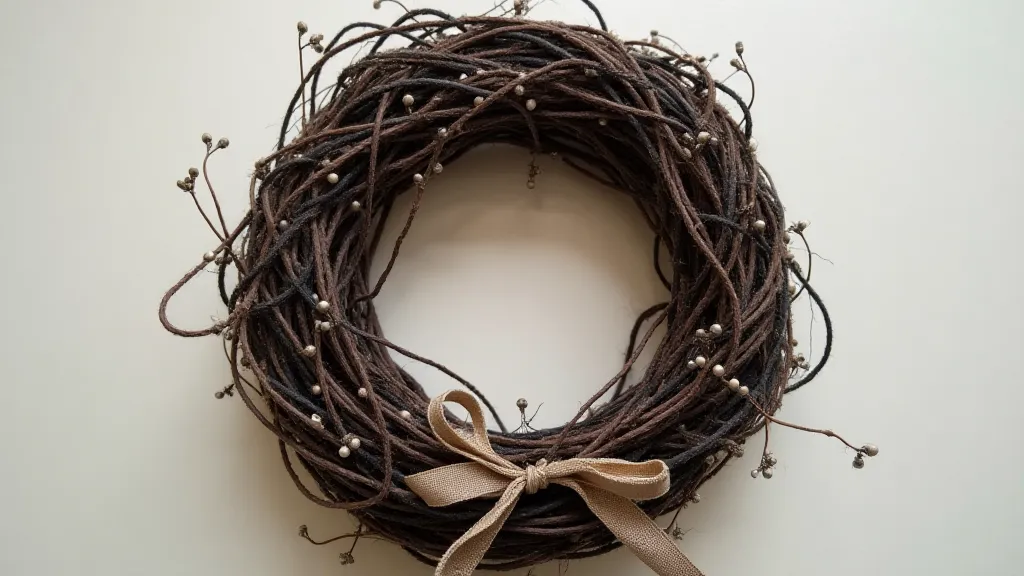
The Romantic Influence: A Wellspring of Inspiration
The Victorian era wasn’t created in a vacuum. The artistic trends of the preceding Romantic period significantly influenced the sensibilities that drove Victorian hair art. Romanticism, with its emphasis on emotion, individualism, and the sublime beauty of nature, fostered a deep appreciation for sentimentality and the exploration of personal experiences. This is evident in the delicate and expressive quality of many Victorian hair portraits, which often sought to capture not just a likeness, but also the inner character and soul of the departed. The movement’s focus on the individual's emotional experience, a hallmark of Romanticism, is richly reflected in the poignant expressions captured within these intricate artworks. This link between Romanticism and the creation of Victorian hair art is an important perspective to consider.
Collecting and Preservation: A Glimpse into the Past
Today, Victorian hair art is a fascinating collectible. These pieces offer a poignant glimpse into a bygone era, revealing not only the artistic skill of the creators but also the emotional landscape of a society grappling with mortality. When collecting, look for pieces that are well-preserved, with intact hair and a secure base. Damage, such as fading, discoloration, or loose hair, can significantly impact the value.
Preserving these fragile artworks requires careful handling and storage. Avoid direct sunlight and excessive humidity, which can cause the hair to become brittle and the colors to fade. Store pieces in acid-free enclosures and handle them with clean hands or gloves. Minor repairs, such as reattaching loose strands of hair, can be done by experienced conservators, but it's important to avoid attempting any major restoration work yourself, as this could easily damage the piece further.
The appreciation for these spectral portraits isn’t simply about owning a piece of history. It’s about connecting with the emotions and experiences of those who came before us, acknowledging the universal human desire to remember and to honor those we’ve lost. It’s about understanding that even in the face of profound sadness, beauty and artistry can flourish. The ability to trace familial connections and histories through these unique keepsakes is a testament to their enduring value—a theme further examined in A Legacy in Strands: Tracing Family Histories Through Hair Art Keepsakes.
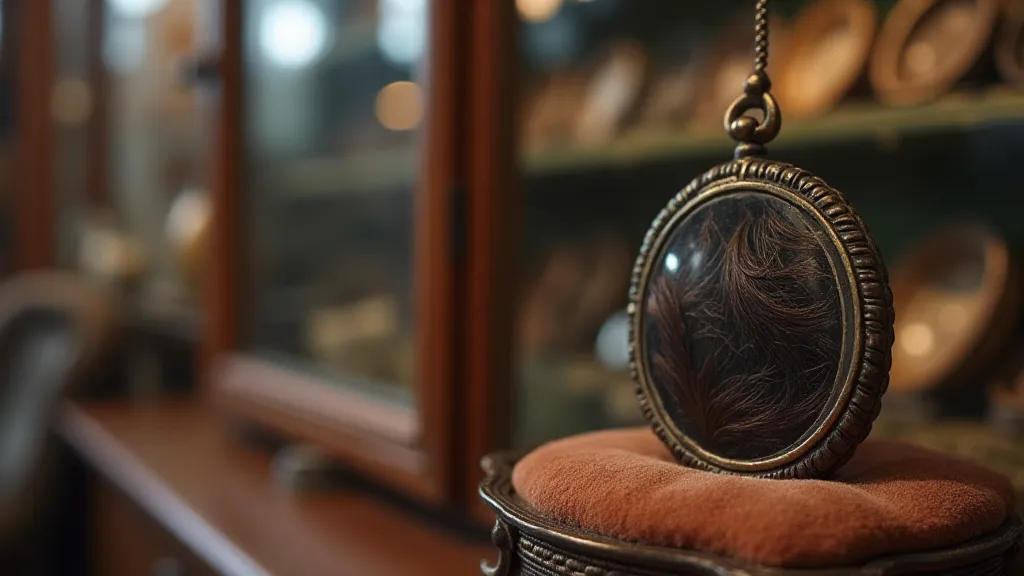
Ultimately, Victorian hair art serves as a profound reminder of our shared humanity and the enduring power of love, memory, and artistry in the face of loss.
